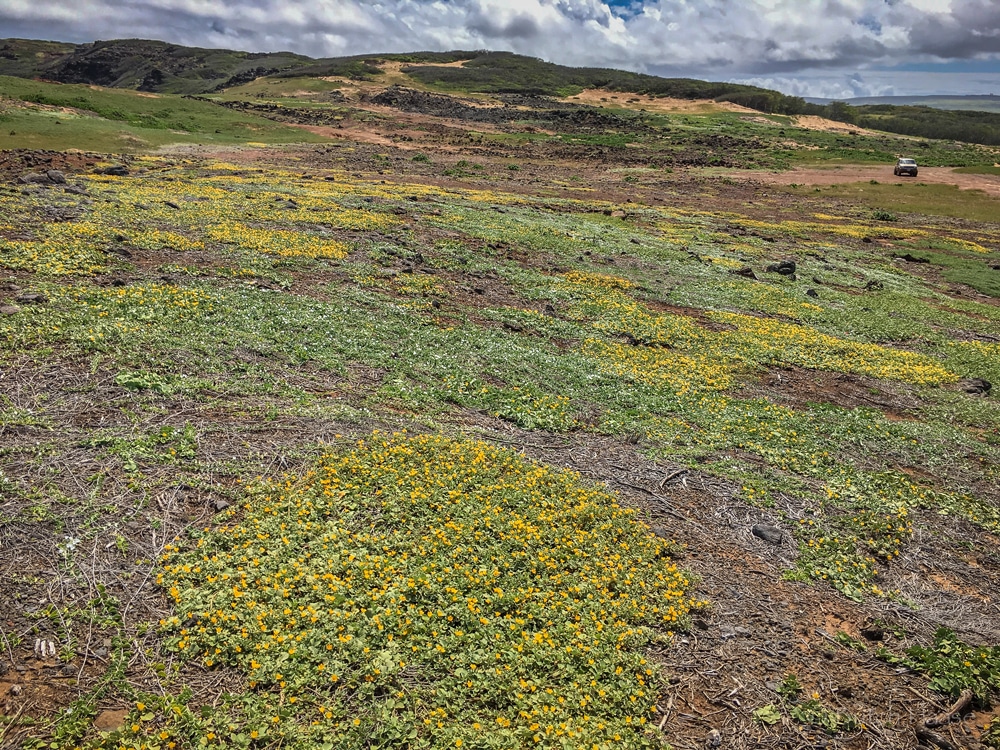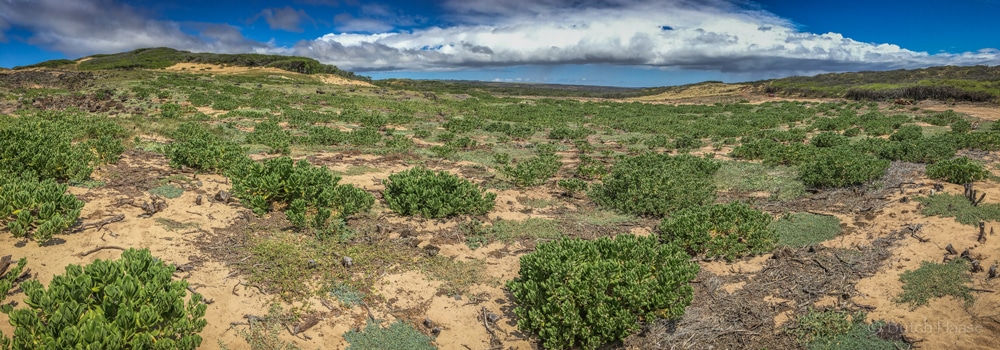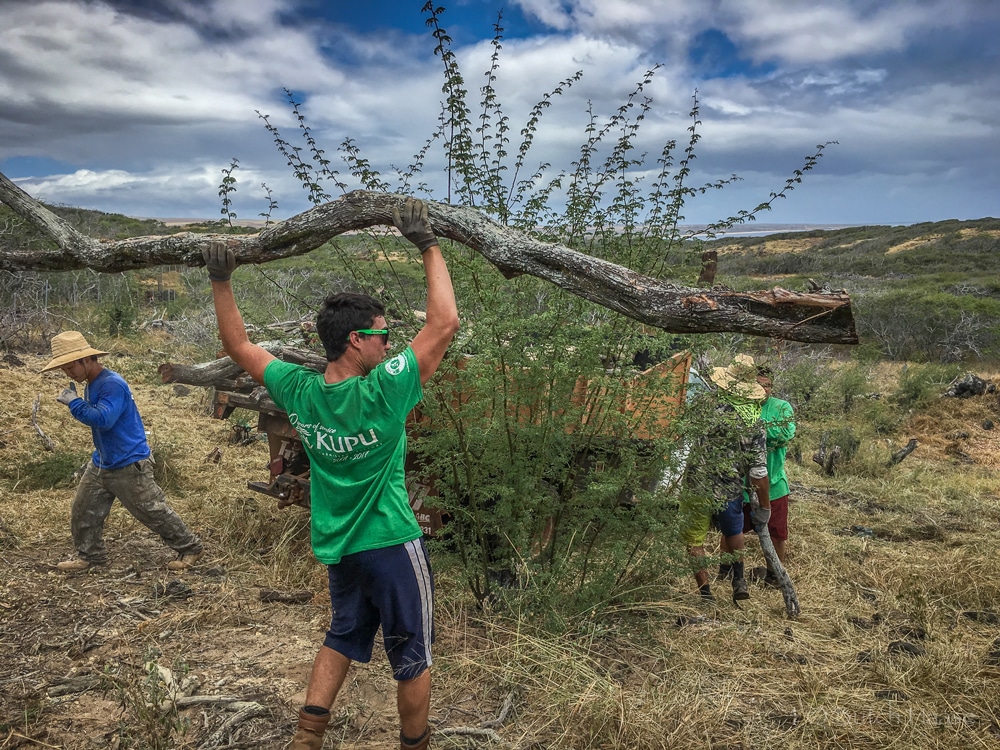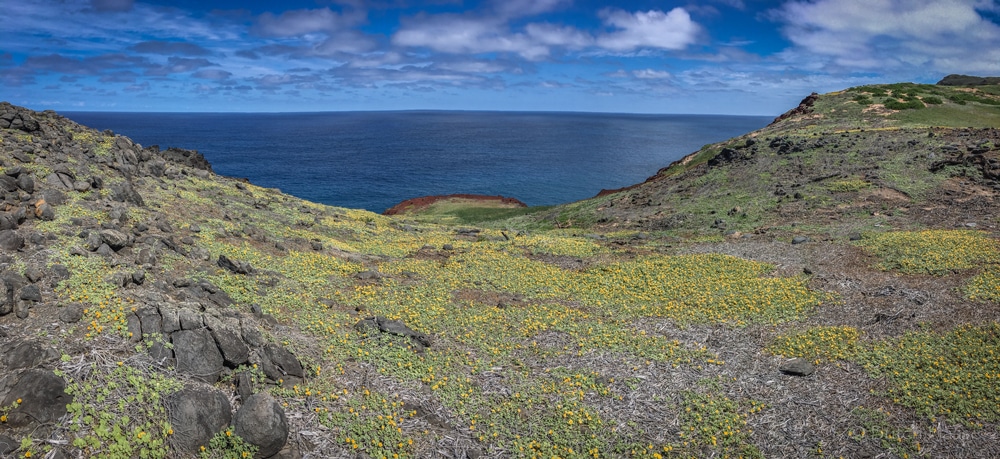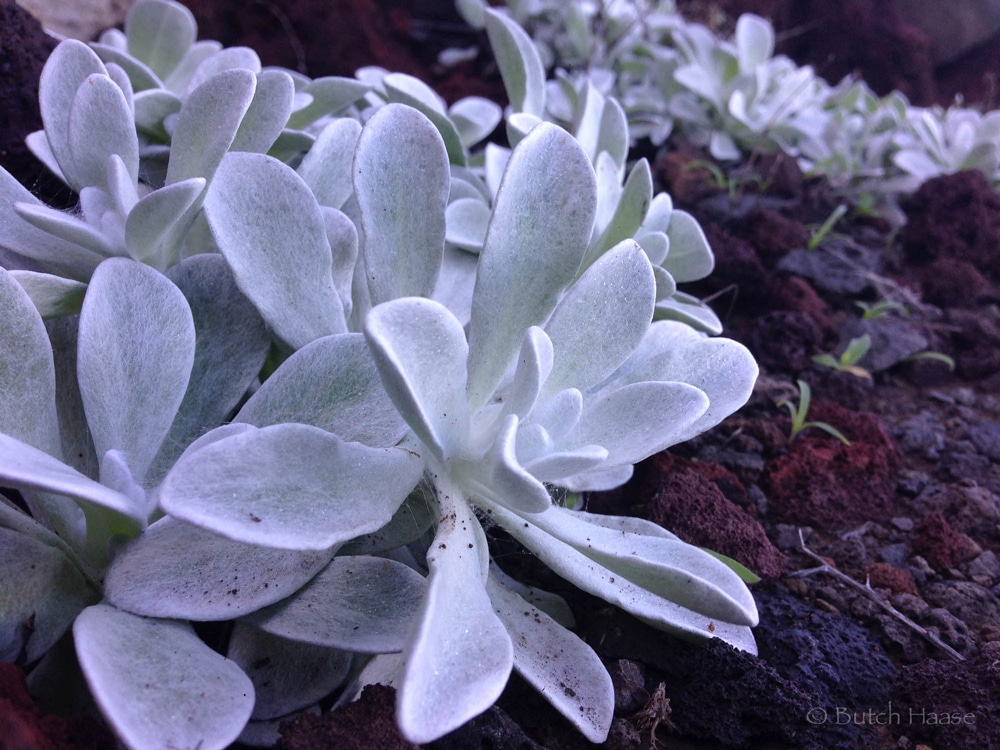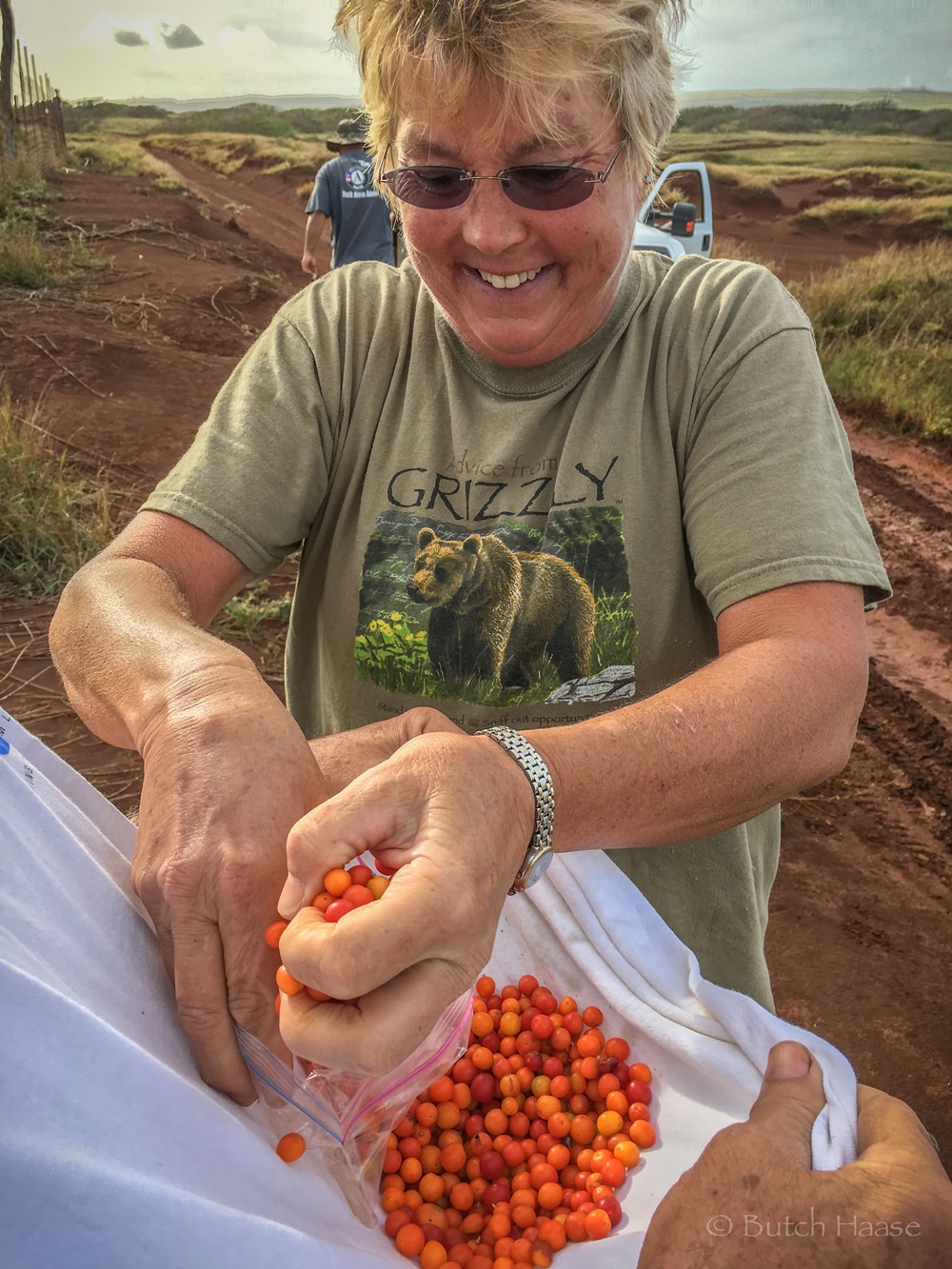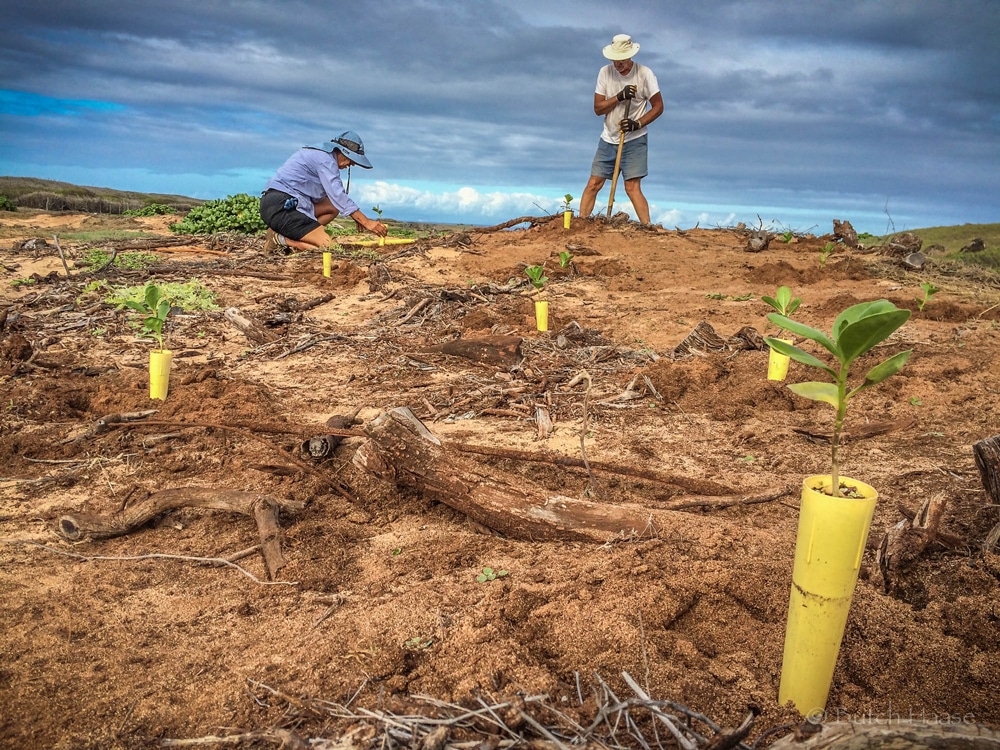Anapuka Dune Restoration
The Moloka’i Land Trust (MLT) initially began a 4-year partnership with USDA Natural Resources Conservation Service Wildlife Habitat Incentives Program (WHIP) to restore the 60 acres of dune and coastal strand ecosystem near Ilio Point. With almost 25 acres of kiawe and lantana cleared in the dune system to date, weed control is underway for expanded plantings at the site. Several other partners (listed above) have joined in the effort to expand this ongoing restoration project.
Hardpan Restoration Test Plot
In November 2009, MLT initiated a 2 acre pilot project for hardpan restoration on the interior of the preserve in a highly eroded area. Initial preparation work was begun and native plantings installed with the help of the Molokai Community College Hawaiian Field Biology Class. This initial planting project has been very successful and is a regular field trip opportunity for the MCC classes as well as other local schools continuing the planting process.
In 2011, the USDA NRCS Plant Materials Center signed a Cooperative Agreement to work with MLT on test plots and field trials for direct seeding of native species produced at their operation on Molokai. This multi-year trial will ultimately yield important data and best practices for future broadscale direct seeding of highly erodible soils across the state with native species. Future plans include turning this trial site into a permanent demonstration site to help educate the general public through guided tours.
Archaeological/Cultural Sites
The Mokio Preserve contains several major native Hawaiian cultural sites including the adze quarry and seasonal housing complex found at Puu Kaeo, the fishing shrine and housing complex near Anapuka. Numerous smaller adze quarries and housing sites are located throughout the preserve.
Dr. Marshall Weisler PhD. Head of Archaeology at University of Queensland, has been working on Molokai for the last 30 years looking into the habitation and sociological patterns of development on West Molokai. He has been contracted by MLT to put together an inventory of the known archaeological sites on the Mokio Preserve along with management recommendations. Since the report was completed in 2009, several new sites have been discovered at Mokio and added to the documented sites list. MLT Field Staff have been trained by Dr. Weisler in the best practices of preserving these sites.
Subsistence Activities
Historical subsistence activities on the Mokio Preserve include predominantly fishing and gathering of ocean resources and material for stone tool manufacturing. Other activities in more modern times include hunting of axis deer. MLT has set up a pass system for residents of Molokai to access the Preserve for traditional subsistence usage.
Kaa Seasonal Wetland
The largest known seasonal wetland on West Molokai occurs on the Mokio Preserve at Kaa. This muti-acre site contains at least two federally listed endangered plant species including Marsilea villosa or Ihiihilauakea. This endemic, deciduous fern resembles a four-leaf clover and dies back during the dry season.
Common in the past, it naturally occurs only on two islands, Molokai and Oahu. This is the largest population in the state and occurs at many other locations on the Preserve. Several species of crustaceans also call the Kaa wetland home during the brief flooded period following winter rain storms. Restoration activities are being developed for this important ecological gem on the arid end of Molokai.





